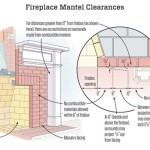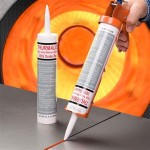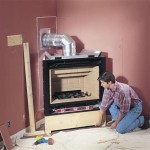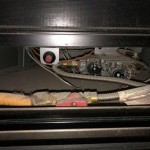How To Remove Brick From Around a Fireplace
Removing brick from around a fireplace is a significant undertaking, often undertaken to modernize a living space, address structural concerns, or prepare for a fireplace remodel. The process requires careful planning, the right tools, and adherence to safety precautions to ensure a successful and aesthetically pleasing outcome. This article outlines the steps involved in safely and effectively removing brick from around a fireplace.
Prior to commencing any demolition work, a thorough assessment of the existing fireplace structure is imperative. This involves identifying the type of brick used, the mortar composition, and any structural elements that might be affected by the removal process. Understanding the nature of the brickwork will inform the selection of appropriate tools and techniques.
Equally important is determining whether the bricks are structural or purely decorative. Structural bricks contribute to the support of the chimney or the overall wall. Removing structural bricks without proper reinforcement can compromise the integrity of the fireplace and the surrounding structure. If there is any doubt about the structural role of the bricks, consulting with a qualified structural engineer or mason is highly recommended.
Furthermore, the presence of asbestos in the mortar or surrounding materials should be ruled out, especially in older homes. Asbestos exposure poses significant health risks. If asbestos is suspected, professional testing and remediation are necessary before any demolition work begins. Local regulations regarding asbestos handling and disposal must be strictly followed.
Safety Precautions and Required Tools
Safety is paramount throughout the entire brick removal process. Adequate personal protective equipment (PPE) is essential to prevent injuries from flying debris, dust inhalation, and potential contact with hazardous materials. The following PPE is recommended:
- Safety glasses or goggles: To protect eyes from flying fragments of brick and mortar.
- Dust mask or respirator: To prevent inhalation of dust, which can contain silica and other harmful particles. A NIOSH-approved N95 respirator or a more robust respirator with appropriate filters is advisable.
- Work gloves: To protect hands from abrasions and cuts.
- Hearing protection: Demolition work can be noisy, and prolonged exposure to loud noises can damage hearing.
- Protective clothing: Long sleeves and pants to protect skin from cuts and abrasions.
- Steel-toed boots: To protect feet from falling debris.
In addition to PPE, the following tools will be necessary for the brick removal process:
- Hammer: For striking chisels and breaking up mortar joints.
- Brick chisel (or cold chisel): For removing mortar around individual bricks.
- Angle grinder with a diamond blade: For cutting mortar joints, particularly if they are very hard or thick.
- Sledgehammer (optional): For breaking up larger sections of brick, if suitable.
- Putty knife or scraper: For removing residual mortar from the wall and bricks.
- Shop vacuum: For cleaning up dust and debris. A HEPA-filtered vacuum is recommended for capturing fine particles.
- Buckets or containers: For collecting debris.
- Drop cloths or plastic sheeting: To protect the surrounding floor and furniture from dust and debris.
- Spray bottle with water: To dampen the work area and reduce dust generation.
- Mortar rake (optional): For removing mortar from larger areas after initial removal.
- Reciprocating saw with a masonry blade (optional): For cutting through brick or mortar, especially in tight spaces.
Ensuring access to a well-stocked first-aid kit is also important in case of minor injuries.
The Brick Removal Process: Step-by-Step Guide
With safety precautions in place and the necessary tools gathered, the actual brick removal process can begin. This process should be methodical and deliberate to minimize damage to the surrounding structure and ensure a controlled demolition.
Step 1: Preparation. Begin by thoroughly covering the surrounding floor and furniture with drop cloths or plastic sheeting. Secure the sheeting with tape to prevent it from shifting during the work. Close off the room from the rest of the house to contain dust and debris. Ensure adequate ventilation by opening windows or using a fan to circulate air. Place buckets or containers nearby to collect debris as it is generated.
Step 2: Mortar Removal. The primary goal is to remove the mortar surrounding each brick. Start by using a brick chisel and hammer to chip away at the mortar joints. Position the chisel at an angle to the mortar joint and strike it firmly with the hammer. Work your way around each brick, gradually removing the mortar. If the mortar is particularly hard or thick, an angle grinder with a diamond blade can be used to cut along the mortar joints. Exercise extreme caution when using the angle grinder, as it generates a significant amount of dust. Wear appropriate respiratory protection and use a water spray to dampen the area and reduce dust generation.
Step 3: Brick Removal. Once the mortar has been sufficiently removed, carefully pry the bricks loose. If the bricks are still firmly attached, use the brick chisel and hammer to gently tap them from behind. Avoid applying excessive force, as this can damage the bricks or the surrounding wall. Work from the top down, removing bricks one at a time. As each brick is removed, carefully set it aside or place it in a container for disposal or reuse.
Step 4: Cleaning and Inspection. After all the bricks have been removed, thoroughly clean the area with a shop vacuum. Remove any residual mortar from the wall using a putty knife or scraper. Inspect the exposed wall for any damage or structural issues. If any damage is found, it should be addressed before proceeding with any further work. Check for signs of water damage, mold, or insect infestation, and take appropriate measures to remediate these issues. Ensure that any structural supports exposed during the demolition are secure and properly supported.
Step 5: Mortar Removal Refinement. For larger areas, a mortar rake can be employed to efficiently remove remaining mortar. This tool is designed to grind away mortar, leaving a clean surface for subsequent repairs or renovations. The mortar rake is especially useful on horizontal joints. When using this tool, dust control is crucial, and a dust collection system attached to the tool is highly recommended.
Addressing Potential Challenges and Considerations
Several challenges and considerations can arise during the brick removal process. Being prepared to address these issues will help ensure a smooth and successful project.
Hard Mortar: Some mortar, particularly older mortar, can be exceptionally hard and difficult to remove with hand tools. In these cases, using an angle grinder with a diamond blade is often the most effective solution. The angle grinder allows for precise cutting of the mortar joints, but it requires careful handling and adherence to safety precautions. Avoid applying excessive pressure, as this can damage the brick or the grinder itself. Use short, controlled bursts to cut through the mortar, and allow the blade to do the work. Regularly inspect the blade for wear and replace it as needed.
Damaged Bricks: During the removal process, some bricks may become damaged or broken. This is often unavoidable, especially if the bricks are old or brittle. Have a supply of replacement bricks on hand to fill in any gaps or replace damaged bricks. Matching the existing brick in terms of color, texture, and size can be challenging, so it is advisable to source replacement bricks from a reputable supplier or salvage yard.
Dust Control: Brick removal generates a significant amount of dust, which can be harmful to breathe and can also make a mess of the surrounding area. Implementing effective dust control measures is essential. In addition to wearing a respirator, use a water spray to dampen the work area and reduce dust generation. Seal off the room from the rest of the house and use a shop vacuum to clean up dust and debris regularly. Consider using an air purifier to further reduce dust levels in the air.
Unexpected Structural Issues: As bricks are removed, unexpected structural issues may be revealed, such as damaged studs, rotted wood, or inadequate support for the chimney. These issues should be addressed promptly to prevent further damage or safety hazards. Consult with a qualified contractor or structural engineer to assess the situation and recommend appropriate repairs. Do not proceed with any further work until the structural issues have been resolved.
Disposal of Debris: Brick and mortar debris can be heavy and bulky, and it may not be suitable for disposal in regular household trash. Check with local waste management authorities for regulations regarding disposal of construction debris. Consider renting a dumpster or hiring a waste removal service to dispose of the debris properly. Recycled brick and mortar may often be accepted at construction waste recycling facilities.
By following these steps and taking appropriate precautions, the task of removing brick from around a fireplace can be accomplished safely and effectively. Patience and attention to detail are crucial for achieving a professional and aesthetically pleasing result. A well-executed brick removal project can transform a living space.

Removing A Brick Fireplace

How To Remove Brick The Easy Way Project Allen Designs

Simple Ways To Remove A Brick Fireplace With S Wikihow

Removing Fireplace S Brick Facade Not So Hard

Simple Ways To Remove A Brick Fireplace With S Wikihow

Simple Ways To Remove A Brick Fireplace With S Wikihow
How To Remove My Too Big Hearth Help Com Forums Home
Removing Brick Fireplace Diy Or Hire A Pro Hearth Com Forums Home

Fireplace Demolition Day The Handyman S Daughter

Latest Diy Project Fireplace Chimney Removal For A Nicer Living Room Jeff Geerling
Related Posts








